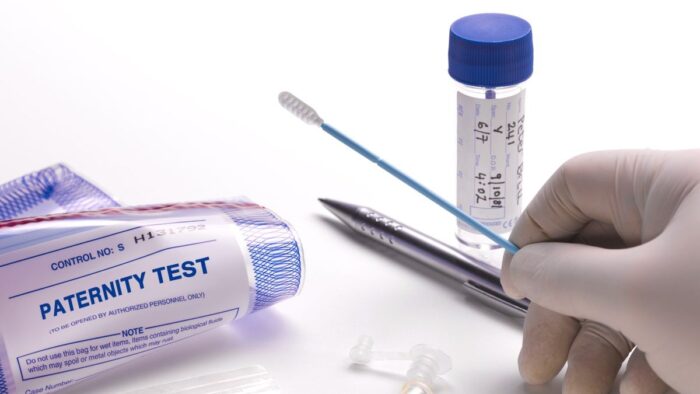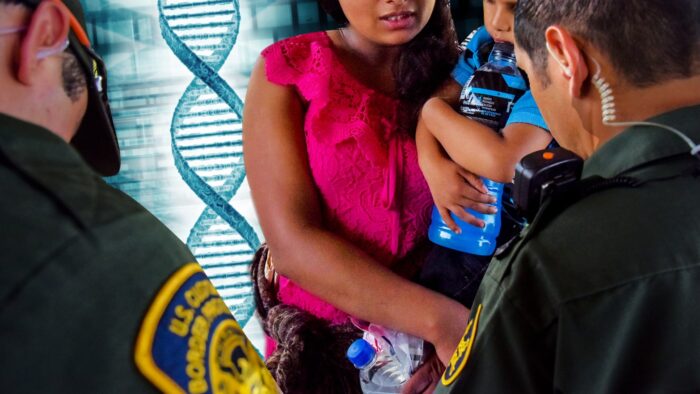
In a world that’s becoming increasingly interconnected, immigration has become a common occurrence. However, it’s not just individuals who are crossing borders; families are too. In these cases, establishing biological relationships is of paramount importance. This is where immigration parentage testing comes into play.
In this comprehensive guide, we’ll delve into the fascinating world of immigration parentage testing, exploring its significance, the testing process, DNA methods used, legal requirements, the role of accredited laboratories, data privacy, challenges, costs, success stories, and the future trends shaping this field.
Introduction to Parentage Testing in Immigration Cases
Immigration parentage testing, often referred to as DNA testing for immigration purposes, is a specialized procedure employed to confirm biological relationships within families applying for visas.
The primary goal is to provide conclusive evidence of parent-child relationships, ensuring that those seeking entry into a new country are indeed family members. This verification is crucial for officials, as it aids in preventing fraud and ensuring that the process remains fair and just.
The Importance of Establishing Biological Relationships

Establishing biological relationships is of paramount importance, particularly in the context of immigration parentage testing. This significance transcends mere paperwork; it goes to the core of fairness, integrity, and justice within systems.
Firstly, verifying biological relationships ensures the accuracy of family-based visa applications. Without concrete evidence of parent-child relationships, the process could be open to abuse through fraudulent claims. This could not only lead to a misallocation of valuable resources but also compromise the integrity of systems.
Secondly, it safeguards against individuals attempting to exploit the system by falsely asserting family ties. Without proper verification, it would be challenging to distinguish genuine families from those seeking to gain entry through deceit. This not only protects the interests of the host country but also ensures that those truly in need of asylum or reunification are not overshadowed by fraudulent claims.
Overview of the Immigration Parentage Testing Process
This process is a meticulously structured procedure designed to provide accurate and conclusive evidence of biological relationships within families applying for visas. At its core, this process involves the collection of DNA samples from the alleged parent(s) and the child in question.
These collected samples are then sent to accredited laboratories, where advanced DNA testing methods, such as Polymerase Chain Reaction (PCR) and Short Tandem Repeat (STR) analysis, are employed. PCR amplifies specific DNA segments, while STR analysis examines repetitive DNA sequences, creating unique genetic profiles for each individual.
The results of these analyses are meticulously reviewed and compared to determine the biological relationship between the individuals. These results serve as critical evidence in immigration cases, aiding officials in making informed decisions about family-based visa applications. The immigration parentage process is marked by precision, adherence to legal requirements, and a commitment to delivering accurate results for families navigating the complexities.
DNA Testing Methods Used in Immigration Cases

Several DNA testing methods are employed in trials, with Polymerase Chain Reaction (PCR) and Short Tandem Repeat (STR) analysis being the most common.
PCR is a highly sensitive technique used for amplifying specific DNA segments, while STR analysis examines repetitive sequences of DNA to establish genetic profiles.
These methods are chosen for their accuracy and reliability in determining parent-child relationships.
Legal Requirements and Regulations
To ensure the integrity and fairness of the process, there are strict legal requirements and regulations governing parentage trials. These requirements vary from one country to another but typically include guidelines on sample collection, laboratory accreditation, and the presentation of results. Adhering to these regulations is crucial to ensure the acceptance of test results by authorities.
Role of Accredited Laboratories in the Process
Accredited laboratories play a pivotal role in testing. They are responsible for processing DNA samples, conducting analyses, and providing accurate and reliable results. These laboratories must meet stringent quality control standards and undergo regular audits to maintain their accreditation. Choosing a reputable and accredited laboratory is essential to ensure the validity of test results.
Handling and Privacy of Genetic Data in Immigration Cases

The handling and privacy of genetic data in cases are subjects of paramount importance. Stringent protocols are in place to protect the privacy and confidentiality of individuals undergoing testing. Genetic data is typically stored securely, and access is restricted to authorized personnel only. This ensures that sensitive information remains confidential throughout the process.
Common Challenges and Misconceptions in Parentage Testing
Parentage testing in cases is not without its challenges and misconceptions. One common misconception is that DNA testing is always 100% accurate, which is not entirely true. While DNA trials are highly reliable, no method is infallible.
Challenges may arise from inadequate or contaminated samples, leading to inconclusive results. It’s essential to understand the limitations of DNA trials and be prepared for potential challenges in the process.
Cost Considerations for Immigration-Related DNA Tests
The cost of immigration-related DNA testing can vary significantly depending on several factors, including the number of individuals being tested, the complexity of the case, and the location of the facility. It’s important for families undergoing this process to consider the financial aspects and plan accordingly. Some countries may provide financial assistance for those with limited means.
Success Stories and Real-Life Examples of Immigration Testing
While trials primarily deal with verifying family relationships, it also brings about heartwarming success stories. Families separated by borders and bureaucracy have been reunited thanks to the conclusive evidence provided by DNA testing. These stories emphasize the humanitarian aspect and its role in reuniting loved ones.
Future Trends and Developments in Immigration Parentage Testing

As technology advances and immigration policies evolve, so too will the field of immigration parentage testing. Future trends may include the development of even more accurate trial methods, improved sample collection techniques, and increased accessibility to testing services.
Additionally, changes in immigration policies may impact the demand for parentage trials and the procedures involved.
Conclusion
In conclusion, immigration parentage testing is a crucial component of the immigration process, ensuring that families seeking a new life in a different country can do so with confidence and integrity. The significance of establishing biological relationships cannot be overstated, as it upholds the principles of fairness and justice while preventing fraudulent claims.
As the field continues to evolve, it is imperative to stay informed about the latest developments, regulations, and best practices in immigration parentage testing to navigate this intricate process successfully.








